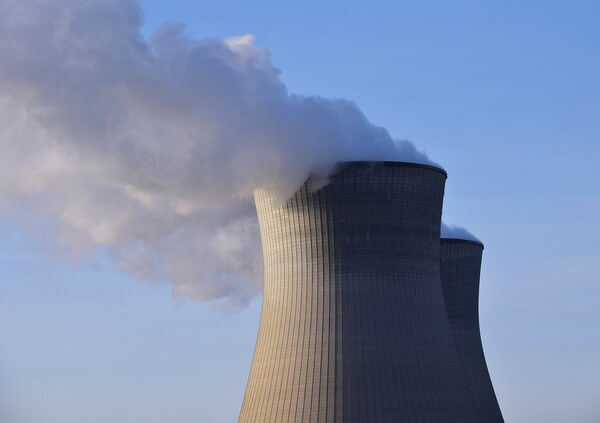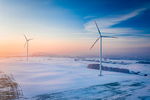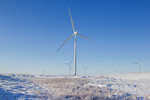News Release from windfair.net
Wind Industry Profile of
Global energy systems in transition
The good news: renewable energy production and use in the US reached an all-time high in the first six months of this year as new data recently released by the US Energy Information Administration (EIA) show. Thus renewable energy accounted for 12.91% of the energy generated in the US for electricity, transportation, heating and other purposes. Wind energy accounted for the largest share of total renewables production (27.78%), and also showed the largest growth, along with solar energy.
But the overall share of renewables in the US electricity mix is still far too low, as Ken Bossong, executive director of the SUN DAY campaign, points out. "The continued dominance of U.S. energy production and use by fossil fuels and the corresponding rise in CO2 emissions is alarming. Fortunately, renewable energy sources are slowly expanding their share of the energy market ... but must accelerate far more rapidly if we are to avoid the worst consequences of climate change."
Other countries are further along in transforming their energy systems. Renewables e.g. accounted for 43% of gross electricity consumption in Germany in the first half of 2021. Sounds like a good figure, but at second glance it is problematic, because in the previous year the share was 48%. This was due to an extremely windy first half of 2020 plus the restrictions imposed by the Corona pandemic, which caused electricity consumption to fall in the lockdown, according to the Center for Solar Energy and Hydrogen Research Baden-Württemberg (ZSW) and the German Association of Energy and Water Industries (BDEW).
It was clear that consumption would rise again this year with the widespread end of restrictions - but that the wind would blow so much weaker was not. And so the production and use of energy from fossil fuels increased worldwide, which led to significantly more emissions.
In the US, consumption in the first half of 2021 was 6.5% higher than the previous year. Coal, in particular, had a 28.73% impact here, while also causing CO2 emissions to rise by a whopping 7.72%.
To counteract this, renewables must be expanded much faster worldwide. "More speed in the expansion of renewables, especially onshore wind energy, obstacles such as lengthy planning and approval procedures, lack of land and inconsistent regulations on species protection urgently need to be removed," said Kerstin Andreae, Chairwoman of BDEW's Executive Board, summarizing the situation for Germany.

The renaissance of nuclear power is cancelled (Image: Pixabay).
In contrast, one form of energy generation can no longer benefit from the problems associated with the expansion of renewables: nuclear power. In 2020, for example, electricity generation from nuclear power fell more than ever before (by more than 100 terawatt hours), while renewables (excluding hydropower) outperformed nuclear power plants in terms of production worldwide.
This is according to new figures from the 'World Nuclear Industry Status Report'. In any case, this paints a bleak picture of the future of nuclear power: there is hardly any new construction ("Nuclear is irrelevant in today’s electricity capacity newbuild market," the report says), plus nuclear has shown a high sensitivity to the COVID-19 pandemic.
The report also does not shed a good light on small modular reactors (SMRs), which are supported by Bill Gates and others: while they may draw some media attention and some public money is flowing, they are not yet commercially available and, as things stand, will not be in the next 10-15 years - if ever. Initial pilot projects in Argentina, China and Russia had disappointing results.
The numbers from the US also speak volumes: production from US nuclear power plants fell 2.81% and 4.07% this year compared to 2020 and 2019 levels, respectively. As a result, energy production from renewable sources exceeded that of nuclear power plants by more than 50% in 2021. This seems to rule out a renaissance of nuclear power plants. Good news once more.
- Author:
- Katrin Radtke
- Email:
- press@windfair.net
- Keywords:
- global, energy system, transition, nuclear, fossil, coal, renewable energy, USA, Germany, government, report, emissions, expansion


























